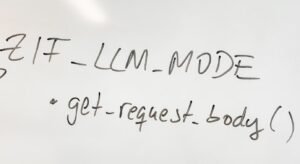Deepfake Use Cases
Deepfake technology, which uses artificial intelligence to create highly realistic fake videos, has gained significant attention in recent years. Although it has raised concerns about misinformation and privacy, there are also legitimate use cases for this technology. In this article, we explore several valuable applications of deepfake technology.
Key Takeaways
- Deepfake technology has both positive and negative implications.
- Its potential use cases range from entertainment and marketing to education and research.
- Regulation and ethical guidelines are necessary to mitigate the risks associated with deepfakes.
Entertainment
One of the prominent use cases of deepfakes is in the entertainment industry. Deepfake technology allows filmmakers and content creators to seamlessly insert actors into historical moments or reimagine iconic characters. This enables the production of visually stunning movies and television shows, enhancing storytelling possibilities.
Deepfake technology has ushered in a new era of visual effects, blurring the line between fiction and reality.
Marketing
Deepfakes can also be employed as a powerful marketing tool. Brands can leverage this technology to create hyper-realistic advertisements featuring popular celebrities or influencers. These ads not only catch the viewers’ attention but also leave a lasting impression, increasing brand recognition and customer engagement.
Education and Research
The field of education can benefit from deepfake technology. By recreating historical figures or simulating realistic scenarios, deepfakes can enhance educational content and make learning more engaging. Additionally, deepfake-generated data can aid in scientific research, allowing researchers to explore various scenarios without the need for costly experiments.
Legal and Forensic Applications
Deepfakes have potential applications in law enforcement and forensics. By manipulating video evidence, investigators can recreate crime scenes or identify suspects more effectively. This technology can assist in solving complex cases and improving the accuracy of legal proceedings.
Face Swapping in Film Industry
A specific use case of deepfakes in the film industry is face swapping. This technique allows actors to play multiple roles in a single scene by digitally replacing their face with another actor’s face. It saves time and resources, simplifies filmmaking, and expands artistic possibilities.
This breakthrough innovation enables actors to portray characters they previously couldn’t play, opening up new artistic avenues.
Data Privacy and Security
Deepfakes also highlight the importance of data privacy and security. As the technology advances, there is an increased risk of malicious actors using deepfakes for fraud or deception. Organizations must implement robust security measures to protect individuals’ data and prevent the misuse of this technology.
Regulation and Ethical Considerations
Given the potential risks associated with deepfakes, it is crucial to establish regulations and ethical standards surrounding their creation and dissemination. Clear guidelines can help prevent the malicious use of deepfake technology while allowing for its responsible and beneficial application in various fields.
Table 1: Industries Utilizing Deepfake Technology
| Industry | Use Cases |
|---|---|
| Entertainment | Visual effects in movies, reimagination of characters |
| Marketing | Hyper-realistic advertisements |
| Education | Recreating historical figures, simulating scenarios |
| Forensics | Recreating crime scenes, identifying suspects |
Table 2: Benefits of Deepfake Technology
| Benefit | Description |
|---|---|
| Enhanced storytelling | Seamlessly integrating actors into historical moments |
| Increased brand recognition | Creating hyper-realistic advertisements featuring celebrities |
| Engaging education | Recreating historical figures and simulating realistic scenarios |
| Improved law enforcement | Reconstructing crime scenes for more efficient investigations |
Table 3: Considerations and Challenges
| Consideration/Challenge | Importance |
|---|---|
| Data privacy and security | Protecting individuals’ data and preventing fraudulent use |
| Regulation and ethics | Establishing guidelines for responsible use to avoid misuse |
| Reliability and authenticity | Ensuring trustworthy and accurate representations |
| Misinformation and manipulation | Addressing the potential harm caused by false representations |
In conclusion, deepfake technology offers a wide range of applications, spanning from entertainment and marketing to education and forensics. While its potential benefits are significant, careful regulation, ethics, and security measures are vital to prevent misuse and protect individuals’ privacy. As deepfake technology continues to evolve, it will be essential to strike a balance between its positive use cases and potential risks.

Common Misconceptions
Misconception 1: Deepfakes are primarily used for harmful purposes
One common misconception is that deepfake technology is only employed for malicious activities, such as spreading disinformation or manipulating political videos. However, this is not entirely true. Deepfake technology has a wide range of potential use cases, both positive and negative.
- Deepfakes can be utilized for entertainment purposes, such as creating viral videos or comedic content.
- Deepfakes can also be employed in the movie industry to recreate past celebrities or de-age actors.
- Deepfake technology has potential applications in fields like education and training, where simulated scenarios can enhance learning experiences.
Misconception 2: Deepfakes are always indistinguishable from real videos
Many people mistakenly believe that deepfakes are always flawless and impossible to differentiate from authentic videos. However, this is not entirely accurate. While certain deepfakes can indeed be highly convincing, there are usually subtle hints or artifacts that can indicate their synthetic nature.
- Blurring or distortion around the edges of the face might be noticeable in poorly produced deepfakes.
- Inconsistencies in lighting or shadows can also sometimes give away the authenticity of a deepfake.
- Often, slight misalignments between lips and spoken words can be observed in deepfakes, especially in videos with high-quality audio.
Misconception 3: Deepfakes can only be created by experts in artificial intelligence
Some individuals believe that only highly skilled experts in artificial intelligence can create deepfakes. However, this is not entirely true as technological advancements and user-friendly tools have made it easier for people with average technical knowledge to create or manipulate deepfake content.
- Various online platforms provide accessible deepfake creation tools that require minimal technical expertise.
- Users can find step-by-step tutorials and guides that simplify the process of developing deepfakes.
- Even individuals with limited knowledge of AI can utilize pre-existing deepfake software to alter existing videos.
Misconception 4: Deepfakes are solely a threat to privacy and security
A common misconception is that the only potential impact of deepfakes is on individuals’ privacy and security. While the misuse of deepfakes indeed poses a significant concern, there are other implications that deserve attention.
- Deepfakes have profound implications for the field of journalism, as they can undermine the trust in media and create challenges in authenticating sources.
- Legal and ethical issues arise surrounding the use of deepfake technology for creating revenge porn or compromising political figures.
- Deepfakes can also have economic consequences, as businesses and organizations may face reputational damage or financial loss from the circulation of manipulated content.
Misconception 5: Deepfake technology can only be used on videos
Contrary to common belief, deepfake technology is not limited to altering videos alone. It can also be applied to various other media formats, expanding its use cases beyond video manipulation.
- Audio deepfakes, known as voice clones, can be used to mimic someone’s voice convincingly.
- Deepfake technology can also be utilized to alter or generate realistic images, such as creating convincing fake photographs.
- Furthermore, text-based deepfake applications, also known as “liar’s AI,” can generate realistic-sounding text that can be misused for deception or spreading misinformation.

Introduction
Deepfake technology, an artificial intelligence technique that creates manipulated videos or images, has gained significant attention in recent years. While deepfakes can be used for various purposes, from entertainment to fraud, their potential implications raise concerns regarding privacy, security, and the spread of misinformation. This article explores ten intriguing use cases of deepfake technology and their impact on society.
1. Celebrity Impersonations
Deepfake technology allows for the creation of highly convincing celebrity impersonations, enabling individuals to appear as renowned figures in videos. This raises concerns about misrepresentation, as these manipulated videos can be used to spread false information or engage in deceptive activities.
2. Political Manipulation
By using deepfake technology, political adversaries can create videos that depict false events or statements by politicians, potentially influencing public opinion or even election outcomes. This type of manipulation threatens the credibility and trust in political figures.
3. Historical Reenactments
Deepfakes can be utilized to recreate historical moments and bring them to life through visual storytelling. While this has potential educational value, there is a risk that misinformation could be propagated if deepfakes are taken as accurate representations of historical events.
4. Film and Entertainment
The entertainment industry has adopted deepfake technology to create realistic visual effects, enhancing the quality of films or enabling the inclusion of deceased actors in new productions. However, the use of deepfakes in this context should be disclosed to protect the authenticity of the viewing experience.
5. Identity Theft
Deepfake technology poses a serious threat to personal security as it enables the creation of falsified videos or images of individuals. This can be exploited for identity theft, blackmail, or various forms of harassment or fraud.
6. Public Figures in Scandals
Deepfakes can be used to manipulate videos featuring public figures, potentially causing significant damage to their reputation. False scandals created through deepfakes have the potential to greatly impact public trust in individuals.
7. Fake News Creation
By manipulating videos or images, deepfake technology can be exploited to create convincing fake news stories. This threatens the overall integrity of information dissemination and undermines trust in the news media.
8. Advertising and Marketing
Deepfake technology offers opportunities for creative advertising campaigns by featuring celebrities or fictional characters in realistic scenarios. However, advertisers must ensure transparency and clearly disclose the use of deepfake technology to avoid misleading consumers.
9. Educational Simulations
Deepfake technology can be employed to create educational simulations where students can interact with historical figures, enhancing learning experiences. However, careful implementation is necessary to clarify that these simulations are not genuine representations.
10. Artistic Expression
Artists have embraced deepfake technology as a medium for creative expression, exploring the boundaries between reality and fiction. While these artworks can be thought-provoking, there is a need for clear labeling to avoid confusion or deliberate deception.
Conclusion
Deepfake technology presents an array of possibilities, from enhancing entertainment experiences to fostering educational engagement. However, the potential misuse of deepfakes in terms of deception, misinformation, and violation of privacy necessitates vigilant regulation and awareness. Society must be prepared to navigate this evolving landscape while preserving trust, authenticity, and ethical practices.
Frequently Asked Questions
What are deepfake use cases?
Deepfake use cases refer to the various applications of deepfake technology, which involves creating manipulated or synthetic media content using artificial intelligence. These use cases include entertainment, education, political satire, cybersecurity, forensic analysis, and more.
How are deepfakes used in entertainment?
In entertainment, deepfakes are used to create hyper-realistic videos by swapping faces or altering voices of actors. This technology allows filmmakers to recreate deceased characters or bring historical figures to life. Deepfakes can also be used for creative storytelling, visual effects, and dubbing in different languages.
What educational purposes do deepfakes serve?
Deepfakes can be utilized in education for historical reenactments, language training, or virtual simulations. By generating realistic visuals and speech, deepfakes can enhance the learning experience by making it more engaging and interactive.
Are there any positive applications of deepfake technology?
Yes, deepfake technology can have positive applications. For instance, it can aid in dubbing foreign films, preserving cultural heritage, creating inclusive media content for people with disabilities, and advancing research in computer vision and machine learning.
What risks are associated with deepfakes?
Deepfakes can be misused for malicious purposes such as fake news, spreading misinformation, identity theft, phishing attacks, and reputation damage. It is crucial to raise awareness about deepfake technology to prevent its misuse.
Are there legal implications associated with deepfakes?
Yes, there are legal implications related to deepfakes. Depending on the jurisdiction, creating and distributing deepfakes without consent may infringe upon privacy, intellectual property, or defamation laws. Laws regarding deepfake use and its consequences are still evolving.
How can deepfakes be used in cybersecurity?
Deepfakes can be used in cybersecurity to test and strengthen facial recognition systems, as well as develop countermeasures against malicious deepfakes. By simulating attack scenarios, researchers can work on improving the detection and prevention of deepfake-related cyber threats.
Are there any forensic applications of deepfake technology?
Deepfake technology can assist in forensic analysis by recreating crime scenes or generating simulations for investigations. It can be used to clarify or enhance captured footage, reconstruct events, and aid in identifying suspects or witnesses.
What industries can benefit from deepfake technology?
Deepfake technology can benefit various industries such as film and entertainment, advertising, education, gaming, market research, and human-computer interaction. Its potential is continuously being explored in these areas for enhanced user experiences and engaging content.
How can deepfake detection be improved?
Deepfake detection can be improved through the development of robust algorithms and technologies that analyze visual and audio artifacts unique to deepfakes. Collaboration between researchers, industry experts, and government agencies is crucial to staying ahead of evolving deepfake techniques.




